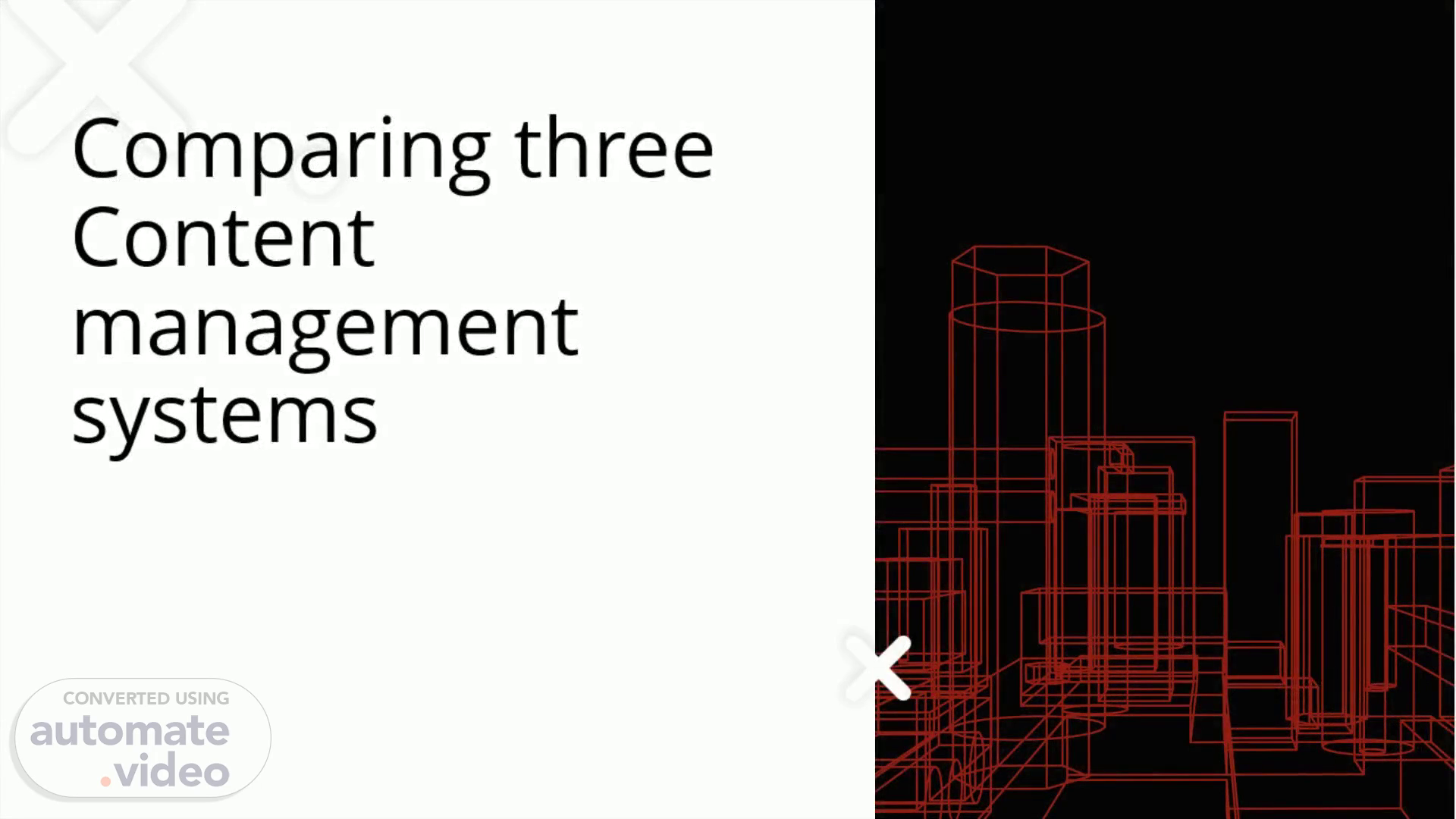
Comparing three Content management systems
Scene 1 (0s)
Comparing three Content management systems.
Scene 2 (7s)
What is a CMS?. Icon Description automatically generated.
Scene 3 (26s)
Comparing the three most popular Content Management Systems.
Scene 4 (40s)
Costs and Expense. Each of these three best CMS is 100% free You can download either one directly from the official websites in just a couple of clicks But there are other side costs that you must take onto yourself.
Scene 5 (54s)
Level of Expertise Needed. Regarding customization, WordPress comes with a friendly interface for tweaking the looks of your site, changing the colors, backgrounds, and other visual elements Joomla and Drupal are more developer-centered and do expect you to be reasonably comfortable working with HTML and PHP – that is, if you want to build a more custom-looking and custom-operating website There are not as many versatile add-ons available for either CMS, or the ones that are there are not as refined as their counterparts for WordPress.
Scene 6 (1m 18s)
The Popularity of CMS. WordPress is used more than 43% of the entire web Joomla 1.7%. Drupal 1.3%..
Scene 7 (1m 30s)
Choice of Designs. Design quality is a huge factor in choosing your CMS We all want our websites to look nice and not be an eyesore There are thousands of free and paid themes available for wordpress on the official website. The choice for both Drupal and Joomla is much smaller. Most importantly, there are hardly any free themes that look good. We’re talking in the range of hundreds compared to thousands for WordPress. That said, the paid themes do look good and offer a good variety of designs and functionality. There’s just way fewer of them vs WordPress..
Scene 8 (1m 57s)
Customization Options. Each of the best CMS here offers its own spin on installing new features on your site using add-ons plugins These let you extend the default range of features that come with your CMS WordPress has more than 50,000 plugins, over 6000 extensions are available for Joomla and 48,000 modules available for Drupal.
Scene 9 (2m 16s)
Security and Updates. All three CMS provide regular updates and bug fixes.
Scene 10 (2m 25s)
What is web 2.0 and how does it affect content management systems.
Scene 11 (2m 54s)
What is GDPR and how it is used to protect data in organizations.
Scene 12 (3m 8s)
Lawfulness, fairness and transparency. Judge. Organizations need to ensure their data collection practices don’t break the law and that they aren’t hiding anything from data subjects. To remain transparent with customers, organizations need to state in their privacy policy the type of data they collect and the reason they’re collecting it..
Scene 13 (3m 25s)
Purpose limitation. Organizations should only collect personal data for a specific purpose, clearly state what that purpose is, and only collect data for as long as necessary to complete that purpose..
Scene 14 (3m 38s)
Data minimization. Organizations must only process the personal data that they need to achieve its processing purposes. Doing so has two major benefits. First, in the event of a data breach, the unauthorized individual will only have access to a limited amount of data. Second, data minimization makes it easier to keep data accurate and up to date..
Scene 15 (3m 57s)
Accuracy of data. The accuracy of personal data is integral to data protection. The GDPR states that “every reasonable step must be taken” to erase or rectify data that is inaccurate or incomplete. Customers have the right to request that inaccurate or incomplete data be erased or rectified within 30 days..
Scene 16 (4m 14s)
Storage limitation. The GDPR does not specify precise storage times for personal data however, The organization must assess the storage time and necessity of the personal data and only store it for as long as necessary for the purposes of processing..
Scene 17 (4m 29s)
Integrity and confidentiality. This is the only principle that deals explicitly with security. The GDPR states that personal data must be processed in a manner that ensures appropriate security of the personal data, including protection against unauthorized or unlawful processing and against accidental loss, destruction or damage, using appropriate technical or organizational measures”..
Scene 18 (4m 47s)
END.